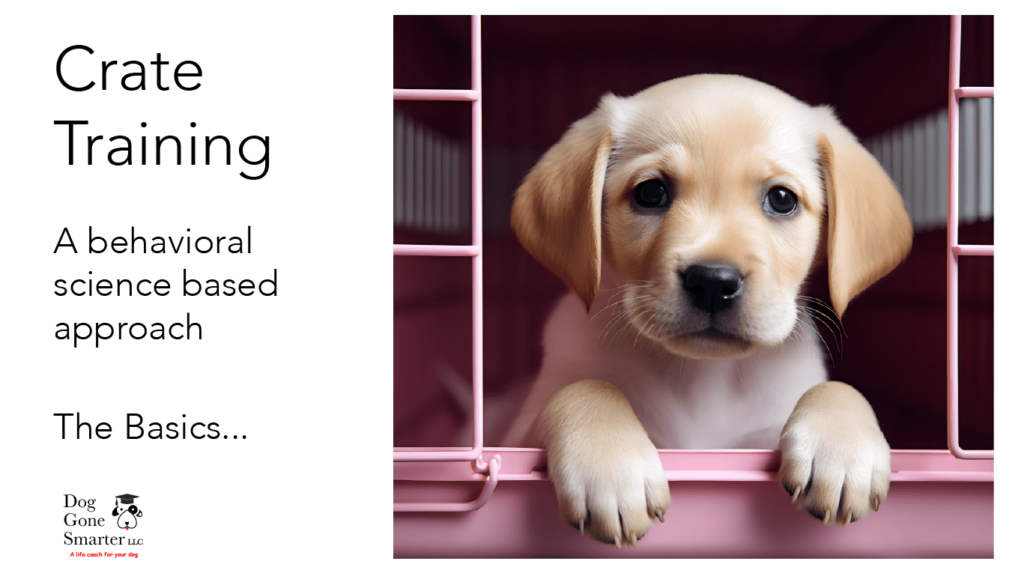Potty training your furry friend can seem daunting at first. However, with the proper techniques and a dash of patience, it becomes a rewarding process for you and your dog. The Dog Gone Smarter approach to canine potty training leverages the latest research in behavioral science, providing a practical, stress-free method for teaching your pet the right place to do their business.
Understanding Your Canine Companion
Before diving into the potty-training process, it’s essential to understand your dog’s natural instincts and behaviors. Dogs are den animals and naturally avoid soiling their sleeping or eating areas. This instinct is crucial in potty training and can be used to your advantage.
The Role of Age in Potty Training
The age of your dog plays a significant role in the potty-training process. Compared to adult dogs, puppies need more frequent bathroom breaks due to their developing bladders. A good rule of thumb is that a puppy can typically control their bladder for one hour for every month of age. So, a three-month-old puppy might resist urination for three to four hours.
On the other hand, adult dogs can generally hold their bladder for about eight hours. However, this duration can vary depending on the dog’s health and habits.
In the case of senior dogs, they might need more frequent potty breaks due to a decline in bladder control. Always be sensitive to any signs of distress or urgency in your senior pet to avoid indoor accidents.
The Importance of a Consistent Routine
Dogs thrive on consistency. Establishing a routine for feeding and potty breaks can significantly aid the potty-training process. Regular feeding times lead to predictable bathroom habits, which can help your dog understand when and where to relieve themselves.
The general guideline for taking your dog out is:
- First thing in the morning
- After each meal
- During playtime
- After waking up from a nap
- Before bedtime
Getting Started with Potty Training
With a basic understanding of your dog’s instincts and behaviors, you’re ready to embark on the potty-training journey. Here’s how to get started.
Setting the Scene
Choose a suitable spot for your dog to relieve themselves. This spot should ideally be outside and should be the same place every time. Dogs like routine and will naturally start associating this spot with elimination.
Rewarding Good Behavior
Positive reinforcement is key in any form of training, especially potty training. Whenever your dog successfully eliminates in the chosen spot, immediately reward them with praise or a treat. This immediate reward helps your dog make the connection between eliminating in the right place and receiving a treat.
Avoid scolding or punishing your dog if they have an accident, as this can make them fearful or confused. Instead, calmly clean up the mess and take them outside to reinforce the correct behavior.
Introducing a verbal command or cue when your dog is taken out to eliminate is also helpful. Consistent use of this command will help accelerate your dog’s learning process.
Avoiding and Handling Accidents
Accidents are bound to happen during potty training. It’s crucial to understand how to handle these situations.
Preventing Accidents
Preventing accidents primarily involves ensuring your dog is taken outside frequently enough. This frequency will depend on your dog’s age and bladder control ability.
When you cannot supervise your dog, consider confining them to a crate or a designated area where they won’t be inclined to soil. Dogs naturally avoid soiling their sleeping or eating areas, so use this instinct to your advantage.
Dealing with Accidents
When accidents do happen, it’s essential to remain calm. Scolding or punishing your dog can lead to fear or anxiety, which can cause more accidents. Instead, clean the area thoroughly with an enzymatic cleaner to remove any odors that might attract your dog back to the same spot.
Crate Training as a Potty-Training Aid
Crate training is a highly effective method for potty training your dog. This method leverages your dog’s natural instinct to keep their den clean.
The Concept of Crate Training
The idea behind crate training is not about confining your dog but providing them with their own comfortable space. Your dog should view the crate as their den, a place they want to keep clean. This instinct encourages them to control their bladder while in the crate, contributing to successful potty training.
Crate Training vs. Free Roaming
While it might be tempting to let your dog roam freely, this can hinder the potty-training process. Free roaming can overwhelm your dog with too much freedom, potentially leading to accidents and destructive behavior.
On the other hand, excessive confinement can be detrimental. It’s about striking a balance between giving your dog their own space and ensuring they get regular interaction and exercise.
For more information on crate training, read the article linked below.

Recognizing and Addressing Behavioral Challenges
During potty training, it’s crucial to identify and address any behavioral challenges that may arise. This may include recognizing signs of stress or anxiety and understanding how to prevent and manage marking behaviors.
Signs of Anxiety or Stress
Signs of anxiety or stress in your dog can interfere with successful potty training. Common signs include frequent whining, restlessness, or a sudden increase in marking or accidents within the home. If you notice these behaviors, it’s essential to consult a veterinarian to rule out any medical causes.
Preventing and Responding to Marking
Marking is a dog’s instinctual behavior to claim territory or respond to stress. To address marking, maintain a stable environment and be consistent in your training and responses.
The Role of Consistency and Patience in Potty Training
Consistency and patience are two crucial factors in successful potty training. By sticking to a precise routine and being patient with your dog’s learning pace, you make it clear to your dog when and where to relieve themselves, reducing the likelihood of accidents.
Advanced Potty-Training Techniques
Once your dog has grasped the basics of potty training, you can move on to more advanced techniques. These might include training your dog to eliminate on a specific cue, dealing with overnight training, or adapting the training process for adult or senior dogs.
Health Considerations in Potty Training
Your dog’s health can influence their potty-training success. Recognizing when medical intervention is needed and understanding how medical issues can impact the training process is crucial for a successful outcome.
Further Training and Commands
Once your dog has mastered potty training, you might consider introducing additional training and commands. This could include teaching your dog to signal when they need to go outside or training them to eliminate on-command.
Embracing the Journey
Canine potty training is a journey that requires patience, consistency, and understanding of your dog’s natural instincts. With the Dog Gone Smarter approach, you’re equipped with the knowledge and techniques to make this process as smooth and stress-free as possible. Remember, every dog learns at their own pace and the key is to stay patient and consistent.
Through effective potty training, not only will your dog learn an essential life skill, but you’ll also strengthen the bond between you and your furry friend. So, embrace the journey and celebrate each success along the way. Happy training!


